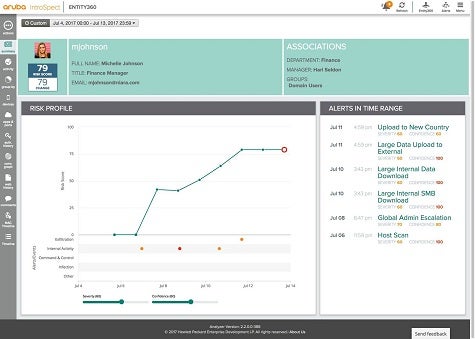The primary point of any cybersecurity attack is usually an endpoint that in one way or another has been comprised by malware. Aruba, a unit of Hewlett-Packard Enterprise, today announced it has developed a security framework for networks designed to thwart such attacks.
Larry Lunetta, vice president of security solutions marketing for Aruba, says the Aruba 360 Secure Fabric combines the security functions such as secure boot, embedded firewalls, centralized encryption, deep packet inspection and intrusion prevention that Aruba has built into its access points and controllers with its ClearPath network access control software and IntroSpect User and Entity Behavioral Analytics (UEBA) behavior analytics software into a unified offering that makes it simpler to automate responses to potential threats.
Rather than having to swivel between multiple management and security management tools, Lunetta says, Aruba is making it possible to employ network as a sensor capable of detecting and responding to security breaches. Key to that capability are the machine learning algorithms that Aruba IntroSpect UEBA solutions provide that are capable of identifying anomalous end-user behavior using data pulled from Aruba networks and over 100 third-party security technologies and assigning a risk score to those behaviors when using a new advanced edition of IntroSpect UEBA, says Lunetta.
Lunetta says the Aruba 360 Secure Fabric brings together capabilities in the existing Aruba portfolio in a way that makes them simpler to deploy and consume versus having to implement a separate security management overlay.
“Our security software is going to have more intimate knowledge of our technology,” says Lunetta.
New capabilities being added to that portfolio in 2018 include the ability to chain various machine-learning models together to address new classes of threats, the ability to apply policies to different classes of devices, and the ability to execute policies directly from with the Aruba IntroSpect UEBA console.
The degree to which IT organizations will want to bake security management capabilities into networks remains to be seen. On the one hand, there’s no doubt that security has been elevated as a core requirement for purchasing any IT infrastructure. On the other, security frameworks generally need to be applied across multiple classes of IT infrastructure. The challenge facing IT organizations will be finding a way to strike a balance between both approaches.



